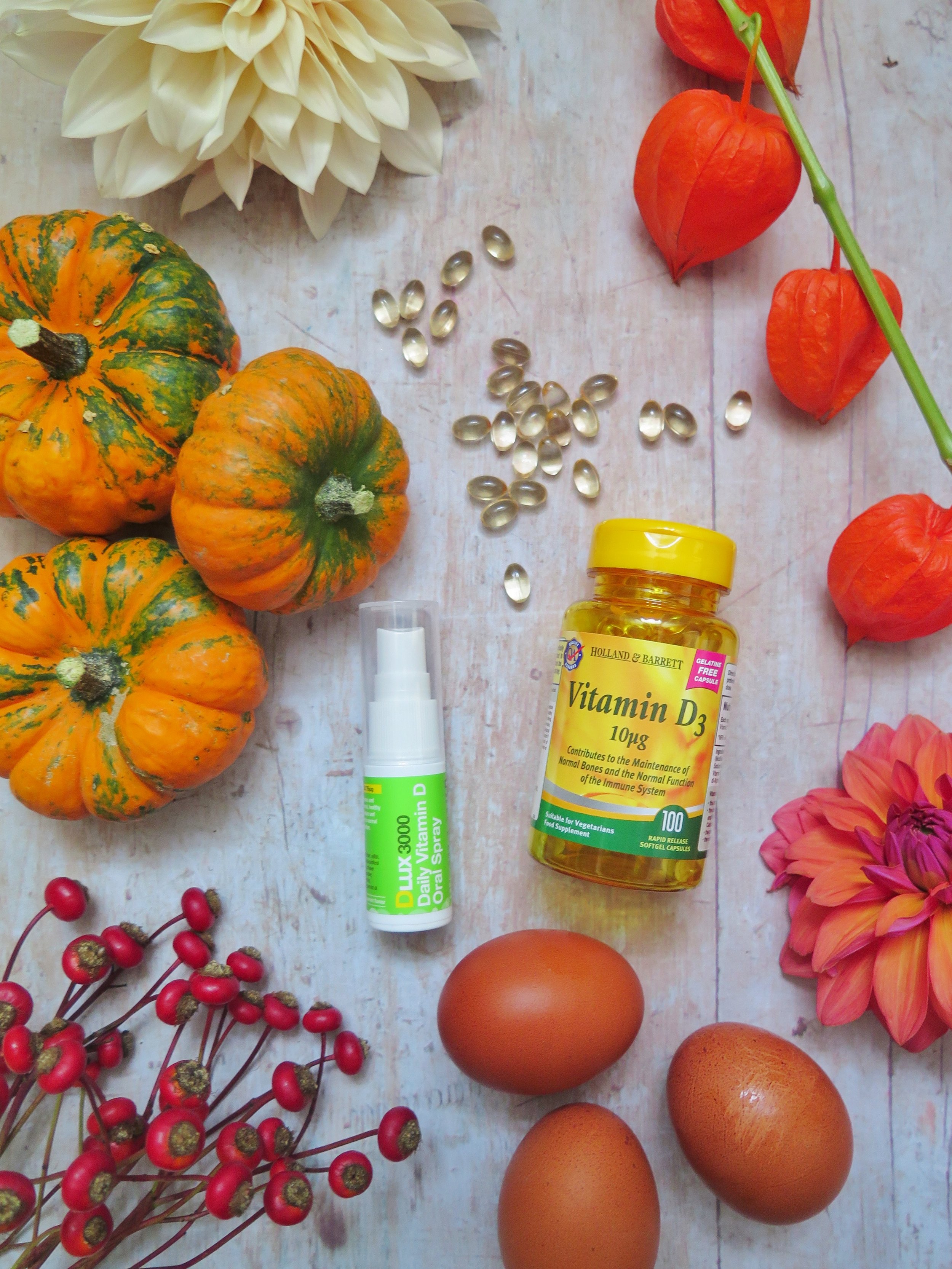Vitamin D: Your autumn must have!
I don’t know about you but I absolutely love autumn: the changing colour of the leaves and fields, cosying up on the sofa in front of the fire, getting the tweed out of storage... But amongst all this change and preparation for the winter, there is one other change I make every October, and that’s starting to take vitamin D supplements and I really hope this post will encourage you to do the same.
Vitamin D is a very important vitamin, vital for many different processes in the body including:
Bone and muscle health and strength
Having low levels of vitamin D can cause tiredness
It seems to reduce the risk of falls in the over 50s
There is growing evidence vitamin D is important for a healthy immune system and fighting infection
There may be some evidence that vitamin D helps to prevent certain cancers but research into this is still ongoing
The vast majority of the vitamin D we get is synthesised by the action of sunlight on our skin, although a small amount is available from some dietary sources including egg yolks, oily fish like salmon and mackerel, fortified cereals and meat. It is difficult to get enough vitamin D from dietary sources alone, as the sources are few and the levels of vitamin D they contain is often not that high. Unfortunately in the UK there is not enough UVB light between October to late March for us to make vitamin D from sunlight so we need to get our sources from elsewhere during these months. Vitamin D levels in the blood drop during the winter with studies showing 30-40% of people have a very low vitamin D level in the winter, compared with 2-13% in the summer. Also anything which interferes with UV exposure during the summer will prevent vitamin D synthesis for example wearing sun lotion (which is of course really important to prevent skin cancer), covering up skin with clothes, having darker skin, or not spending much time outdoors.
The Department of Health* recommend that all people aged 5 years old and over should be receiving 10 micrograms (sometimes written as 400 units) of vitamin D every day through dietary sources or supplements. Most people can make enough vitamin D through the sun over the summer months, so it may not be necessary to take a supplement between April to September as long as you are getting adequate sunlight exposure. However between October to March it is highly recommended that we all take a supplement of 10 micrograms of vitamin D each day. This can be easily and cheaply purchased over the counter from pharmacies, supermarkets or health food shops.
It’s not common, but it is possible to overdose on dietary and supplement sources of vitamin D which can raise your calcium level to a dangerous or rarely even a fatal level so it is really important to not exceed the maximum safe daily limit. You cannot however overdose on vitamin D which is synthesised by sunlight. The European Food Safety Authority has set the safe limit for dietary and supplement sources of vitamin D at a maximum of 100 micrograms (or 4000 units) per day. ** If your doctor finds that your vitamin D level is very low on a blood test, they may prescribe you a higher dose than this recommended upper limit but it will only be for a short time and your calcium levels will be monitored during treatment.
So I would strongly advise that, like me, you start taking an over the counter vitamin D supplement of 10 micrograms (400 units) each day between October to March to keep yourself as healthy as possible over the autumn and winter months.
*Vitamin D and Health. Scientific Advisory Committee on Nutrition 2016
** Scientific Opinion on the Safe Tolerable Upper Intake Level of Vitamin D 2012




